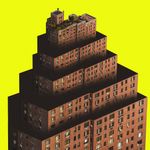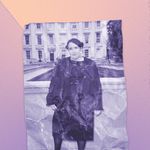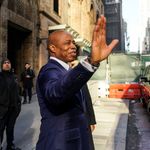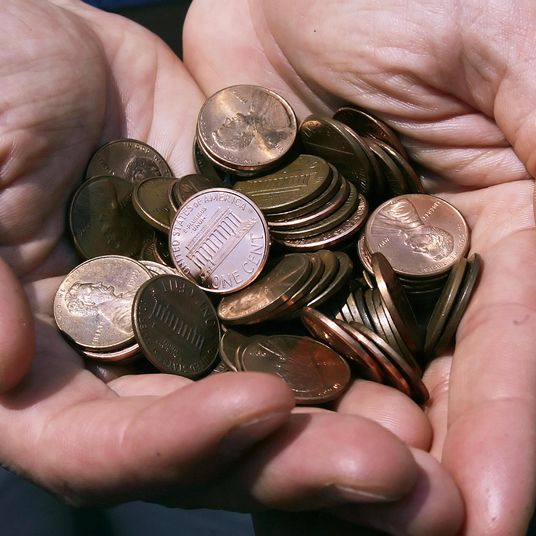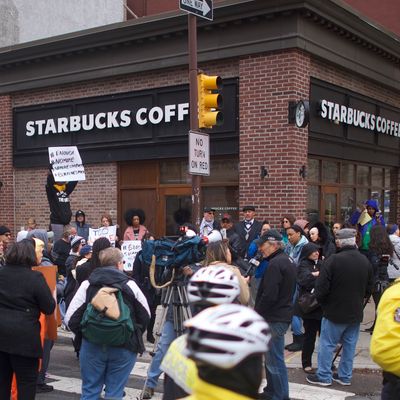
In the aftermath of the now well-publicized racial profiling incident against two black men at a Philadelphia Starbucks, the company closed its 8,000 U.S. stores on the afternoon of May 29 to provide unconscious-bias trainings to its 175,000 employees. While a laudable step, racial competency trainings that focus on “unconscious bias” ultimately miss the point. Using an unconscious-bias paradigm to challenge racial profiling inherently misrepresents the nature of racism by reducing it to a psychological pathology whose effects can be addressed simply by asking employees to “find differences between themselves and others.”
Racial-bias trainings, therefore, often fail to ground their curricula on the historical and contemporary systems, practices, policies, and ideologies that produce, sustain, and legitimize white supremacy. An unconscious bias framework seeks to curtail individual behavior, for example, “to make customers and one another feel more welcome.” Anti-racist education, on the other hand, seeks to challenge the way white supremacy organizes meaning, access, worth, and history through time, space, and memory. Anti-racist education understands that history does not pass; it accumulates.
In lieu of racial bias training, what if Starbucks instead decided to offer a one-day short course on site-specific histories of white supremacy? Since the majority of Starbucks’s employees are white (both at the executive and non-executive level), perhaps it would be useful if Starbucks architected its curriculum on the very histories that give rise to racial profiling and racially motivated microaggressions in the first place? What could be on the curriculum in Philadelphia?
• Between 1682 and 1705 one in 15 white families in Philadelphia owned slaves.
• Beginning in 1693 Philadelphia’s Colonial Assembly began to place controls on people of African descent because they feared “the tumultuous gatherings of the negroes in the town …”
• Philadelphia’s “Black Codes” of 1700 prohibited black people from gathering in groups of four or more or purchasing liquor. Anti-loitering “Black Codes” such as those described above set in motion the very idea that blackness itself is a proxy for criminality. If you’re white, then the burden of proof for establishing criminality generally rests with the law. If you’re black, then the burden of proof for disestablishing criminality (already an illogical legal construction) generally rests with oneself. Simply stated, when black people wait in public they’re loitering; when white people wait in public, they’re lounging.
• Many white abolitionists from Philadelphia believed that the fundamental inferiority of black people — free or otherwise — rendered them incapable of citizenship. When the Abolition Societies of the United States met in Philadelphia in 1796 they offered the following unsolicited, infantilizing advice to free Africans and other people of color: “avoid frolicking, and amusements which lead to expense and idleness … refrain from the use of spiritous liquors … and behave yourselves in a civil and respectful manner.” (History is clear, however, that the behavior or comportment of people of color has never served as an impediment to the serrated persistence of white supremacy.)
• The Federal Housing Administration’s (FHA) discriminatory lending and mortgage insurance practices from 1934–1968 led to the residential racial segregation of cities like Philadelphia.
• And gentrification in Philadelphia is currently deepening and magnifying racial (re)segregation in the city.
• In Philadelphia — a city where black and white folk each account for 45 percent of the population — almost 60 percent of the officers involved in shootings between 2007 and 2013 were white, while 81 percent of suspects involved were black.
• Based on a 2015 study, 83 percent of Starbucks stores in the U.S. serve predominantly middle-class or wealthy white areas.
The problem of white supremacy in the United States is obviously larger than Starbucks or the city of Philadelphia. The problem of white supremacy in the United States spans region, time, and space. This is precisely why we propose that Starbucks consider offering its employees a place-based anti-racism course that can be tailored to each city and state where the company does business.
To push back forcefully against these racialized histories and incidents we first need to know these histories. Hopefully, the way we collectively choose to respond to these incidents in the future will challenge us all to look beyond individual instances of unconscious racial bias and instead explore the structural nature of race, racism, and white supremacy in our own towns and cities around the country.


